VOL. II — IMAGE BANK (2024-present) The second volume of THE-ICONOMIST, launched in 2024, draws from Scott Watson’s idea that “we are all image banks” to explore the appropriation of digital images as a way of commenting on the world. Its editions are built from collections sourced from image banks, expanding the project’s research on contemporary visual flows and the possibilities of intervention within this vast collective repository.
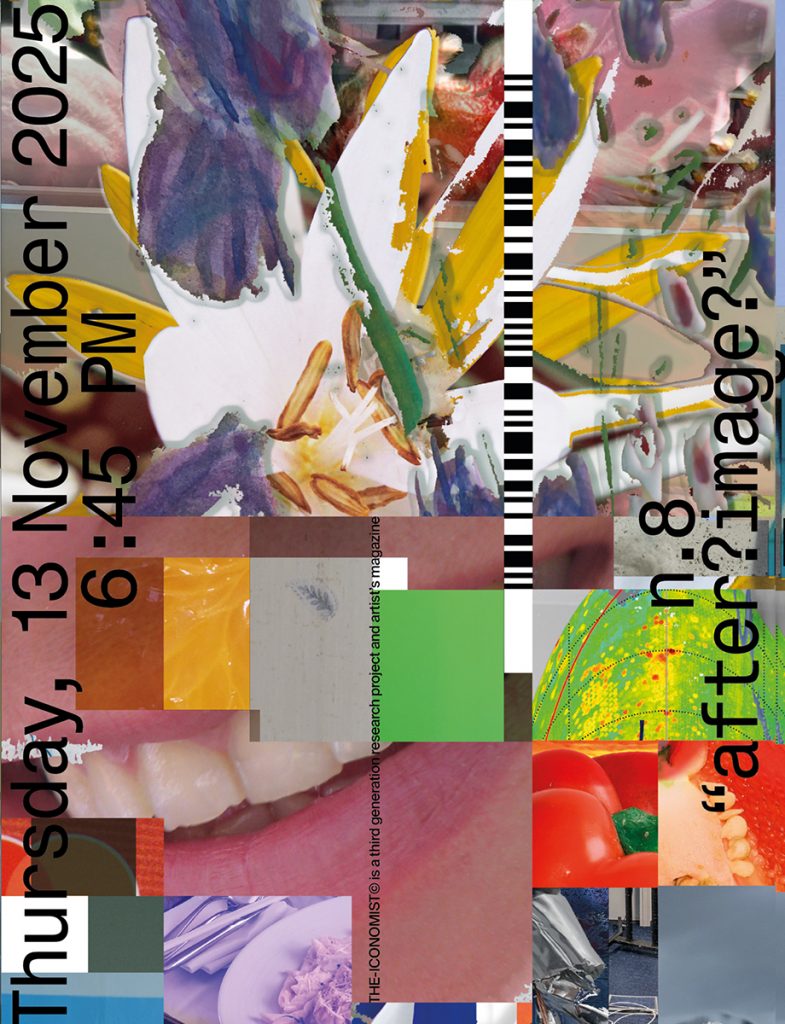
ISSUE Nº 8
To propose/To recreate
AFTER-IMAGE. The eighth issue of THE-ICONOMIST, titled To propose / To recreate, takes as its point of departure Édouard Glissant’s notion of the aprèzan: the present as a living interval between destruction and regeneration. From this idea unfolds a reflection on what it means to create in an era where images multiply endlessly, and where visibility itself has become a form of capture. In a world increasingly shaped by artificial intelligence, every image we share becomes data; analyzed, categorized, and reabsorbed into vast systems of recognition. Within this landscape, the issue8 suggests a different kind of response: a digital craftsmanship that moves against automation, exploring how the deliberate act of cutting, layering, and reassembling images can function as both creation and camouflage, a way of disrupting the smooth readability demanded by machines. To propose / To recreate unfolds as a moving terrain of visual thought, which is part proposal, part reconstruction. In addition to experimental texts created by THE-ICONOMIST, the edition also features selected excerpts from authors such as Naomi Klein, Thomas Pynchon, Mark Fischer, Olga Tokarczuk, Fernando Birri, among others.
$20 USD Buy in print
$5.99 USD Buy digital version
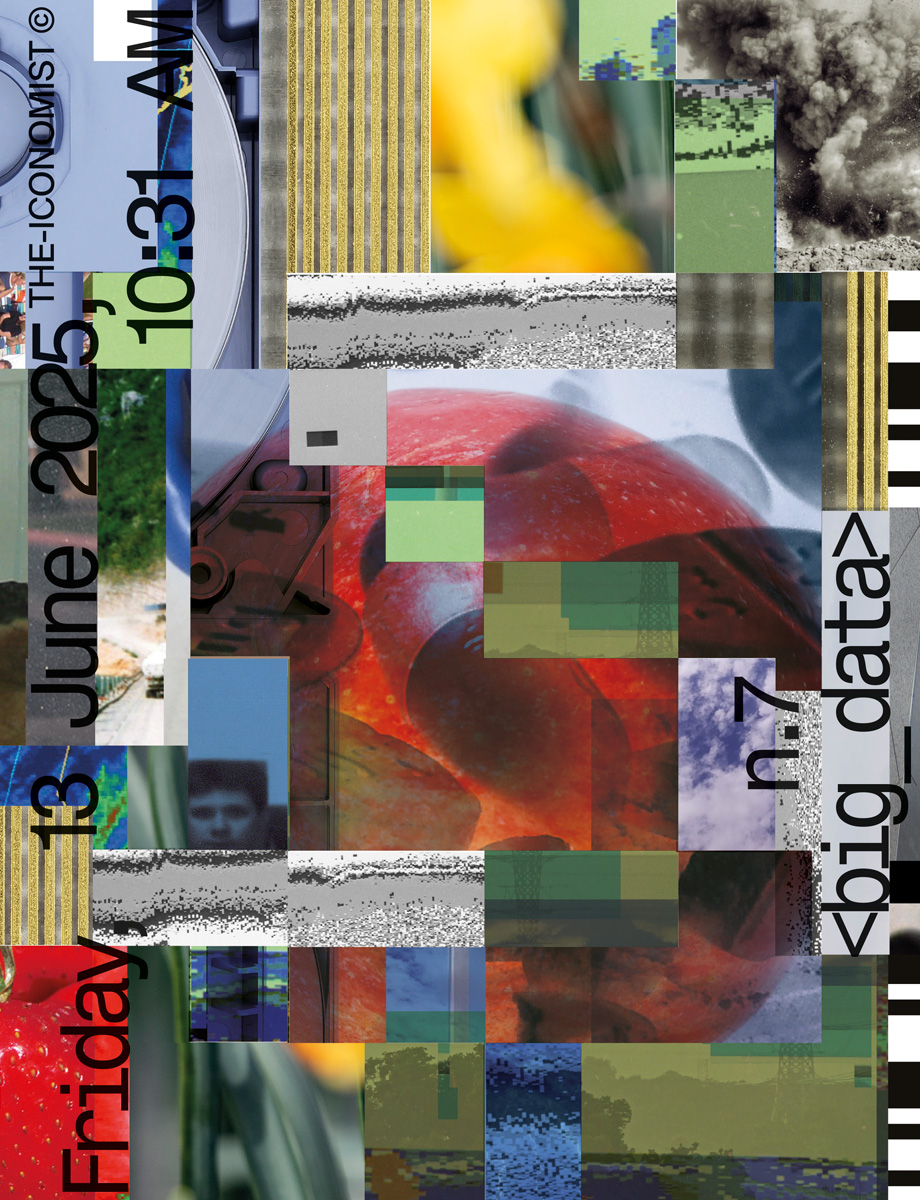
ISSUE Nº 7
To track
BIG DATA. The new issue of THE-ICONOMIST is structured around three verbs: to track, to store, to capitalize. They do not appear as themes or narrative devices, but as discrete operations, technical procedures that have become naturalized, embedded in daily life and in the forms of attention, language, and memory. Instead of chapters, there are fragments: instructions, automated speech, interrupted narratives, visual commands, and snippets of code. The result is an editorial body that behaves like an environment, not a narrative. In the opening text, language approximates the flow of a continuous timeline, where every gesture — getting out of bed, opening an app, looking into the mirror — is already processed data. Typography multiplies, margins fail, images do not explain. System icons, graphic overlays, and fragmented structures compose a visuality that simulates a machine in operation (or in malfunction). The organizes itself as an unstable field of reading. The logic of the three verbs remains active in the act of turning pages: as we browse, we track; as we return, we store; as we interpret, we participate in a broader circuit of symbolic conversion. This edition is the third part of the IMAGE-BANK volume started in 2024, inspired by the words of curator Scott Watson in 1977: “we are all image banks, we all live in an image bank, we carry an image bank and we have the power to intervene in that image bank.
$20 USD Buy in print
$2.99 USD Buy digital version
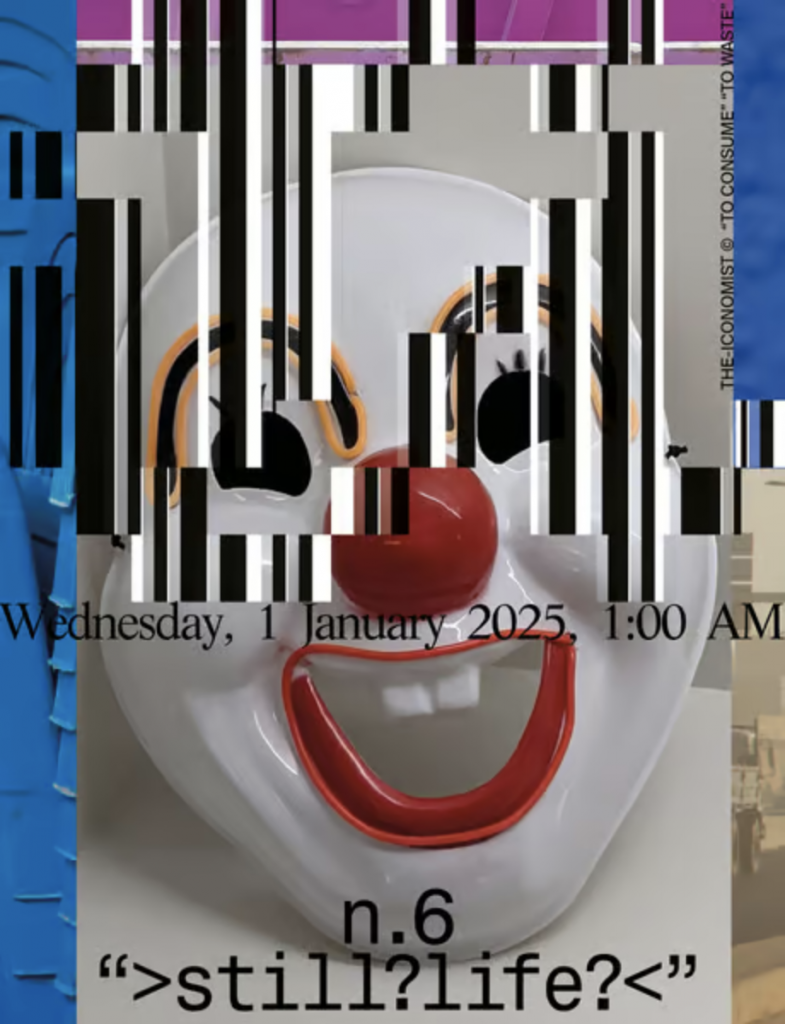
ISSUE Nº 6
To consume/To waste
The ICONOMIST Issue 6 presents itself as a visual and textual essay examining the scars of a society sickened by late capitalism. Inspired by the seminal texts Junkspace by Rem Koolhaas and Infraordinary by Georges Perec, this edition not only observes but dissects neglected spaces, accumulated waste, and the traces of a world collapsing under the weight of its own excesses. Through a curated selection of images oscillating between the documentary and the interpretative, readers are led through scenarios ranging from the dazzling and hyper-artificial universe of fast food, or “junk food,” to landfills and waste dumps, where the shine of consumption is replaced by neglect. Abandoned commercial spaces and vacant lots emerge as silent symbols of the failure of an infinite progress promise. The pages also portray human vulnerability: houses destroyed by natural disasters, waste pickers scavenging for what remains, and devastated landscapes that denounce systemic indifference to the environment and marginalized populations. Among the selected texts, authors such as Anna Lowenhaupt Tsing, Jean-Paul Fargier, Stanley Brouwn, Byung-Chul Han, Walter de Maria, Siri Hustvedt and others, help build the conceptual framework of this edition. In the interplay of combinations proposed by the edition, the concept of “still life” is subverted. Here, it is not about representing the silent order of inanimate objects but revealing urban chaos and the desacralization of the everyday. It is a still life that lives—and decays—in territories contaminated by ambition, inequality, and neglect. This edition is a call to see what is invisible or too uncomfortable to be noticed. It is a portrait not only of a world in decline but of a civilization that insists on ignoring the signs of collapse while indulging in excess—even of images.
$20 USD Buy in print
$2.99 USD Buy digital version

ISSUE Nº 5
To watch/To speculate
Inaugurating its new volume of publications, THE-ICONOMIST presents an unusual thematic dossier built around the verbs “To watch” and “To speculate”. Inspired by excerpts from Michel Foucault’s book “Discipline and Punish: The Birth of The Prison” and William Shakespeare’s poem “All The World’s A Stage”, we explore the complex issues of surveillance in the digital age and the role of security cameras in contemporary society. Instead of creating images generated by artificial intelligence, we decided to delve into the vast banks of digital images available on servers around the world. This method seeks to give new meaning to an often forgotten arsenal of imagery, visually composing this issue with authentic and historically charged material. Through this volume, we address crucial themes such as privacy and power, violence and social behavior, technology and ethics. In addition, we have enriched our analysis with selected texts by renowned authors such as Octavia Butler, Don DeLillo, Jean Baudrillard, Thomas Elsaesser, Anne Carson, Guy Debord, Marshall McLuhan and Barbara Kruger, among others.
$20 USD Buy in print
$2.99 USD Buy digital version
VOL. I — ULTRA-PROCESSED (2022-2023)_Entirely composed of AI-generated images, these volume explore the tension between distortion and perfection, presenting an ultra-processed vision of the world through a vast visual framework. The introductory volume of The Iconomist features four speculative editions structured around operational verbs: collect, wear, catalog, ask/answer.
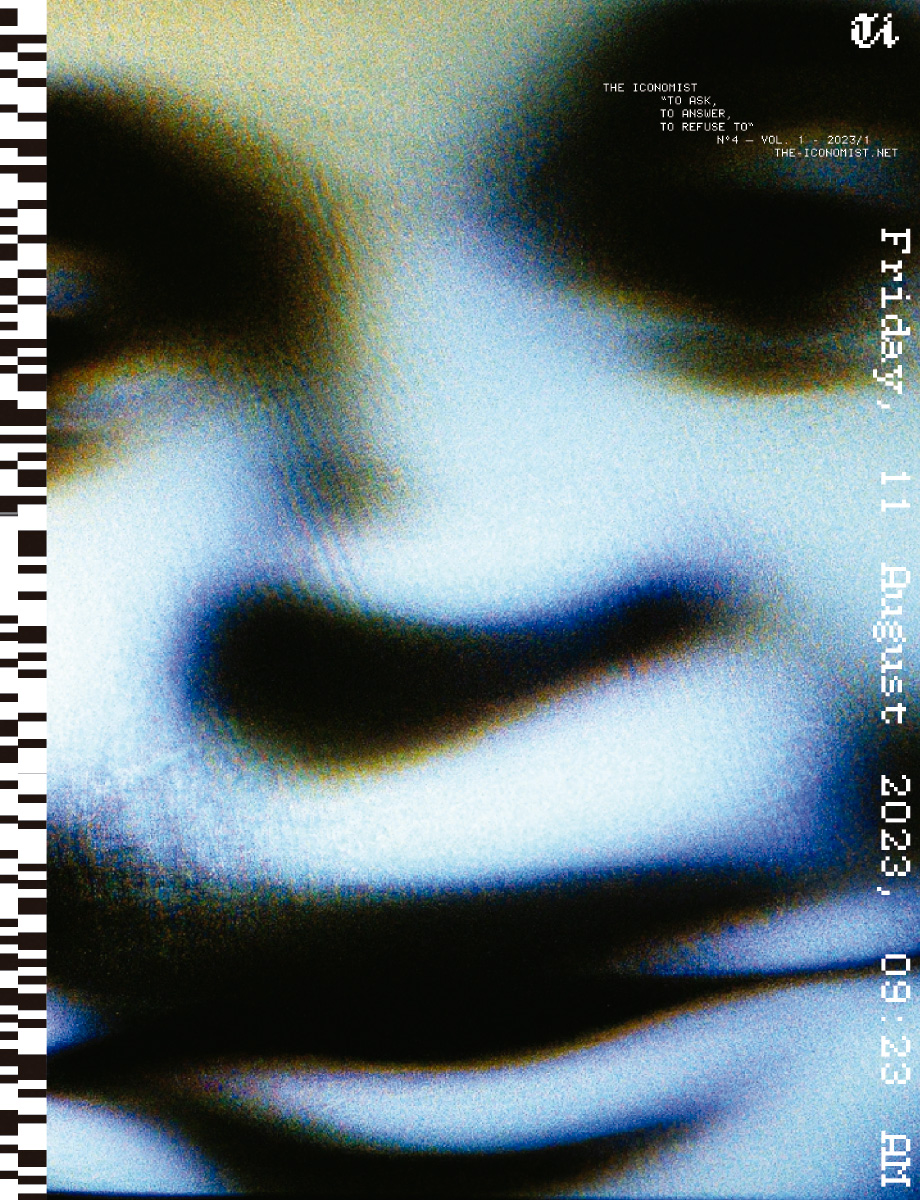
ISSUE Nº 4
To ask/To answer/To refuse
Introducing THE ICONOMIST’s latest thematic dossier. For the edition that closes the first of four editions of the magazine, we embarked on the world of interviews and questionnaires. What is a photograph? What is photography? What is an image? In addition to these questions, we also took inspiration from Proust’s questionnaire and JG Ballard’s short story “Answers to a Questionnaire”, a list made up only of answers to unknown questions. In addition, we also present selected texts by Lucas Samaras and his 1978 Auto-Interview, Marlene Dumas, Thomas Hirschhorn and others.
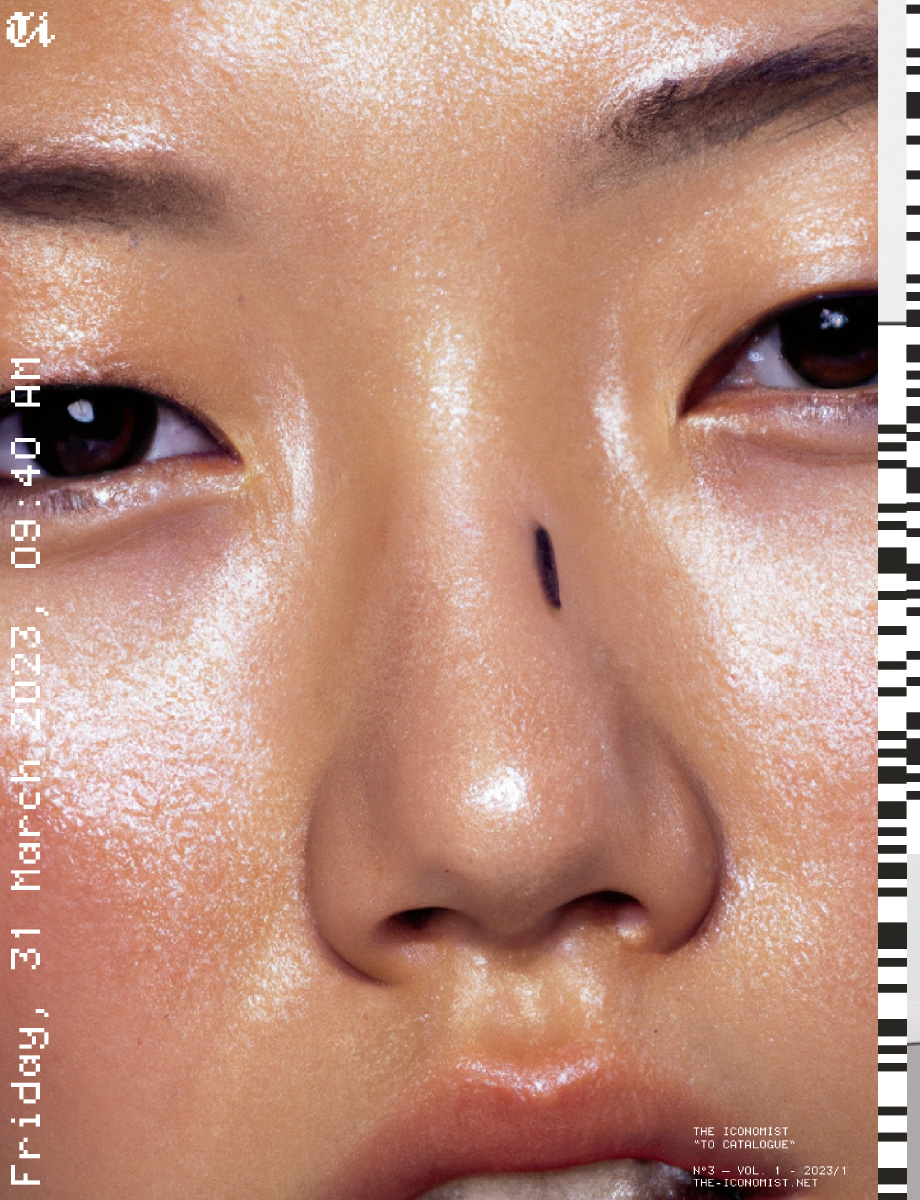
ISSUE Nº 3
To catalogue
Introducing THE ICONOMIST’s latest thematic dossier. This edition takes inspiration from art magazines and catalogues to curate a collection of images that provoke and question our relationship with artwork documentation in the age of artificial intelligence. All the clichés of the art world are represented, the artist’s studio, the the gallery, the white walls, the compositions, the descriptions. We are excited to present a selection of proposals of artworks that are now part of the #theiconomist collection, with complete descriptions and speculations on their materiality. As a complement to this visual content, we have also included selected (and inspiring) texts from authors such as Boris Groys, Hito Steyerl, Georges Didi-Huberman, Man Ray, and more.
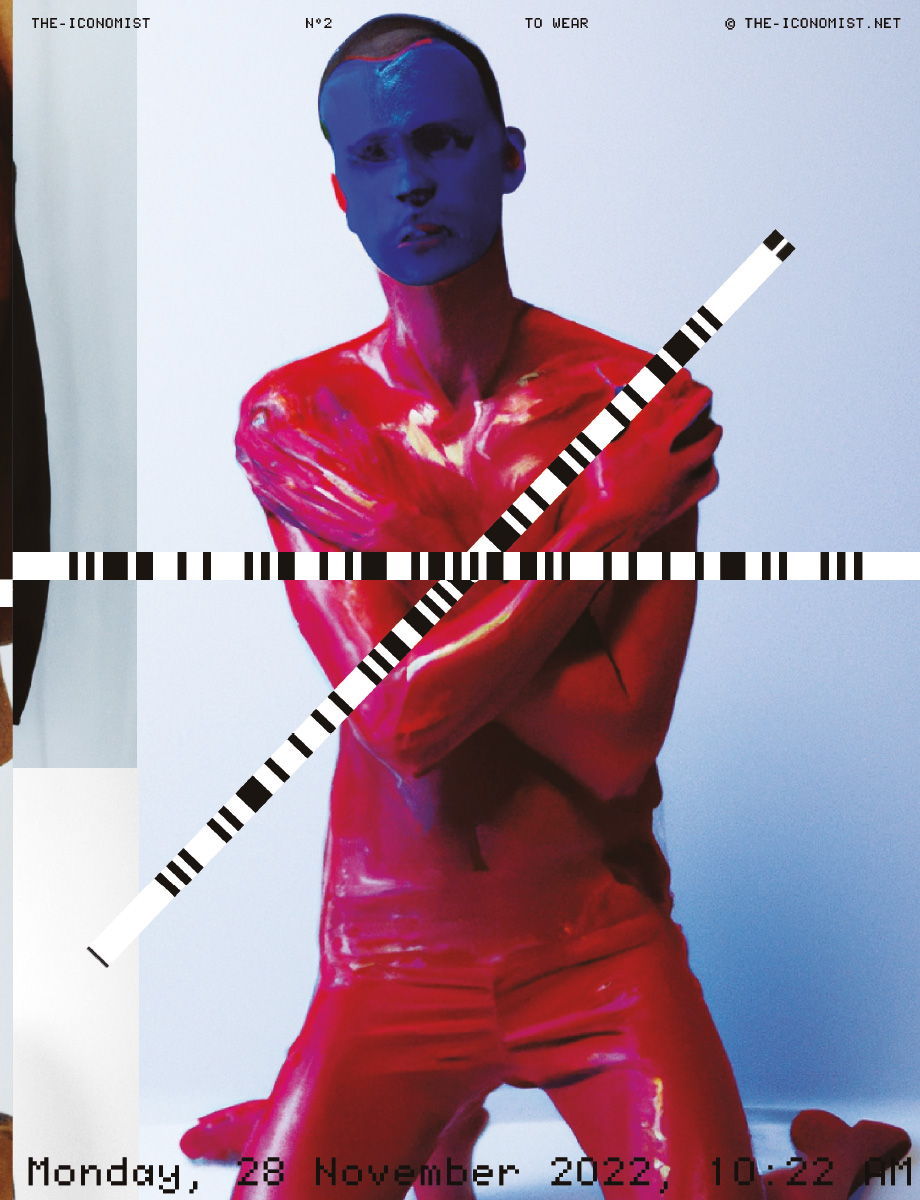
ISSUE Nº 2
To wear
At first glance, a fashion magazine, or something other than a style magazine, with models and their looks made of improbable mixtures, speculations around accumulation and consumption. How to wear images? How to wear what’s left of an exhausted world? Artificial armor, mountains of plastic and synthetic fabric. It is impossible to dive, it is impossible to find anything. Use what you have, that’s it. After collecting, it’s time to wear. To assemble a body of materials. To turn the material into an extension of the body and to rely on a possibility of protection. Change everything at any moment. It may look like a fashion magazine, but it is a survival manual. The issue also includes selected excerpts by authors such as Judith Butler, Emanuelle Coccia, and Georges Bataille as well as collages of text made from reviews of fashion shows and news. A process of rethinking the verb to wear in a world in the process of depletion, in terms of image and environment
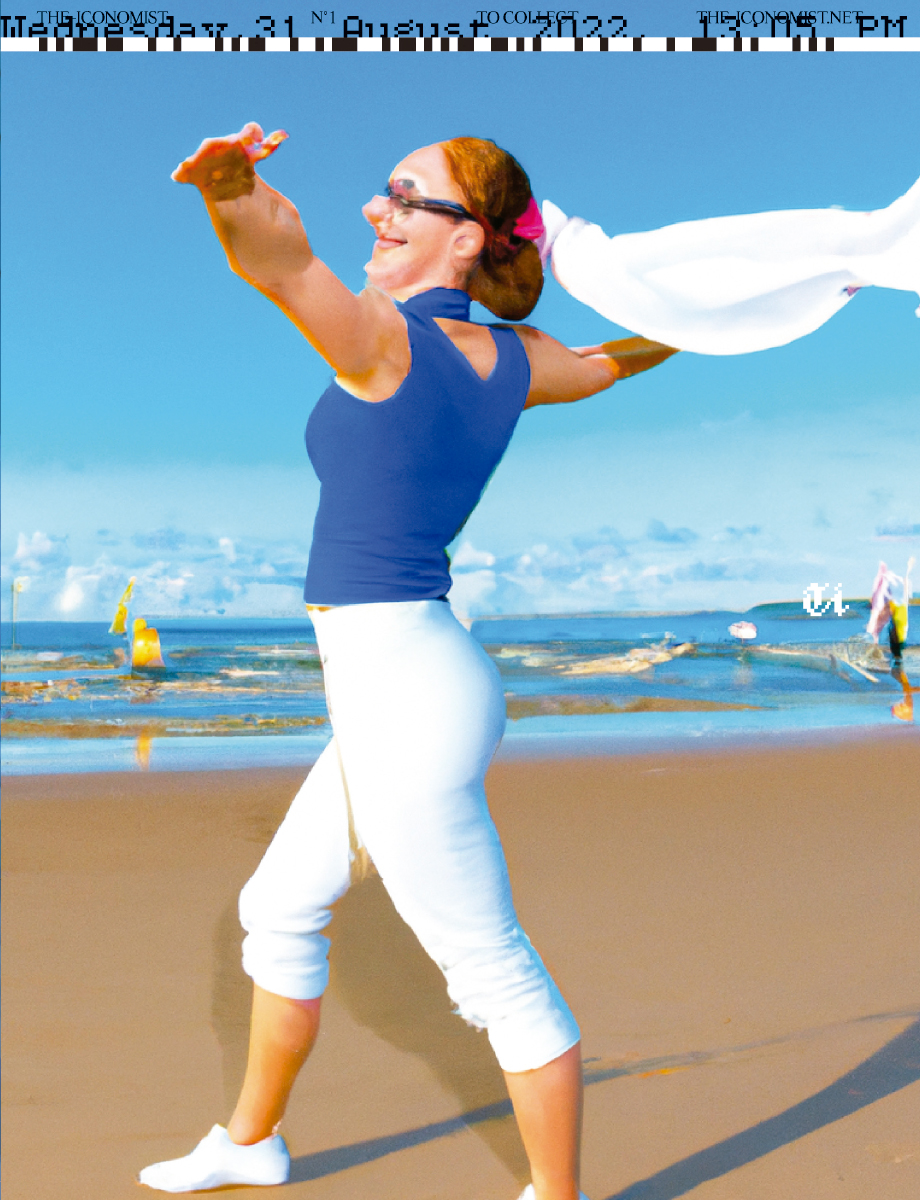
ISSUE Nº 1
To collect
Taking its name from economist Gilson Schwartz’s 2006 neologism ‘Iconomy’ while also nodding to longstanding news weekly The Economist, THE-ICONOMIST questions our relationship with images in this era of image saturation with each issue using verbs as its themes. All images and texts in this edition were generated using artificial intelligence. The edition also includes selected excerpts by Susan Sontag, Emmanuel Levinas and Sergei Eisenstein.
$20 USD Buy in print
$2.99 USD Buy digital version